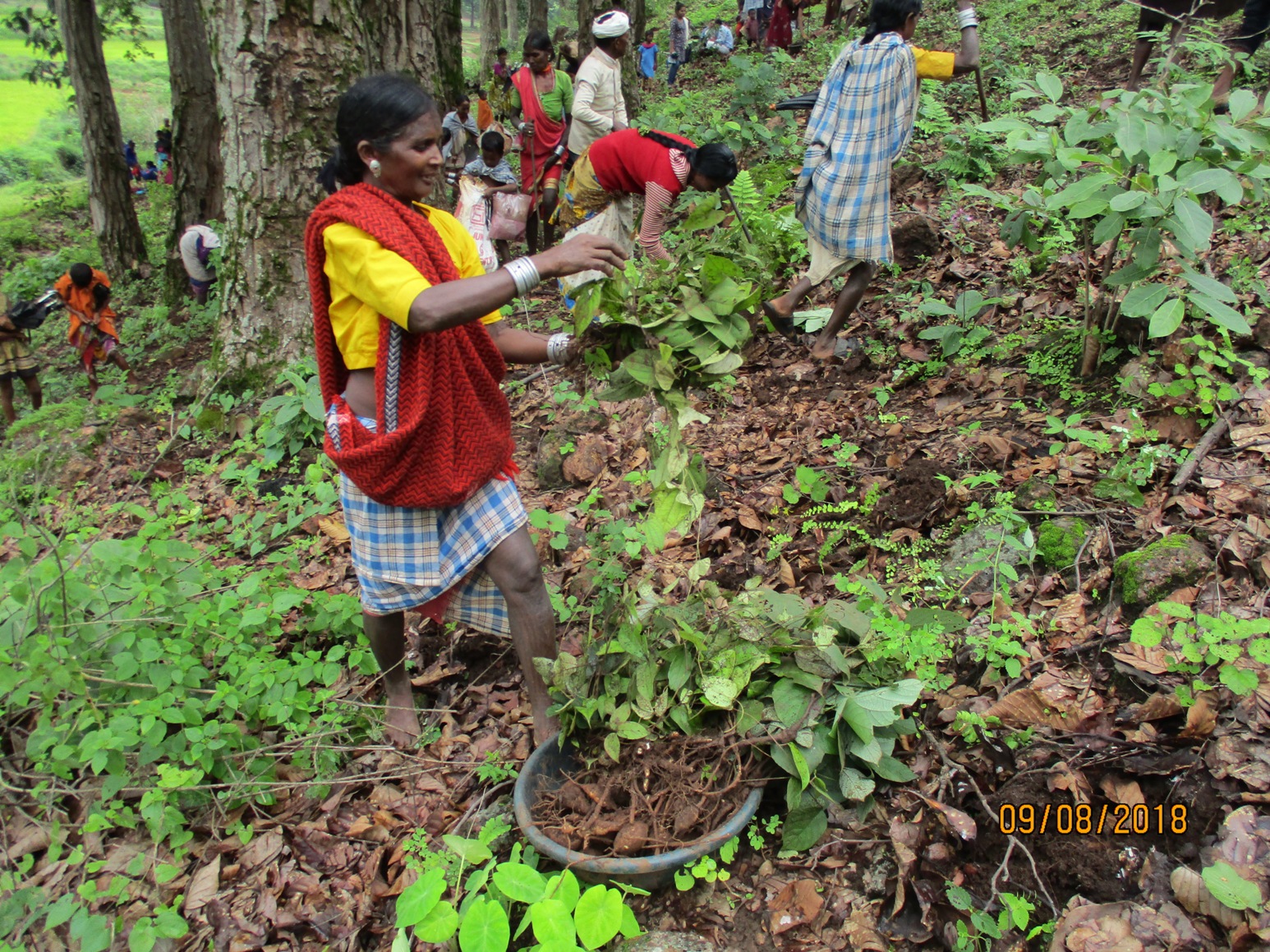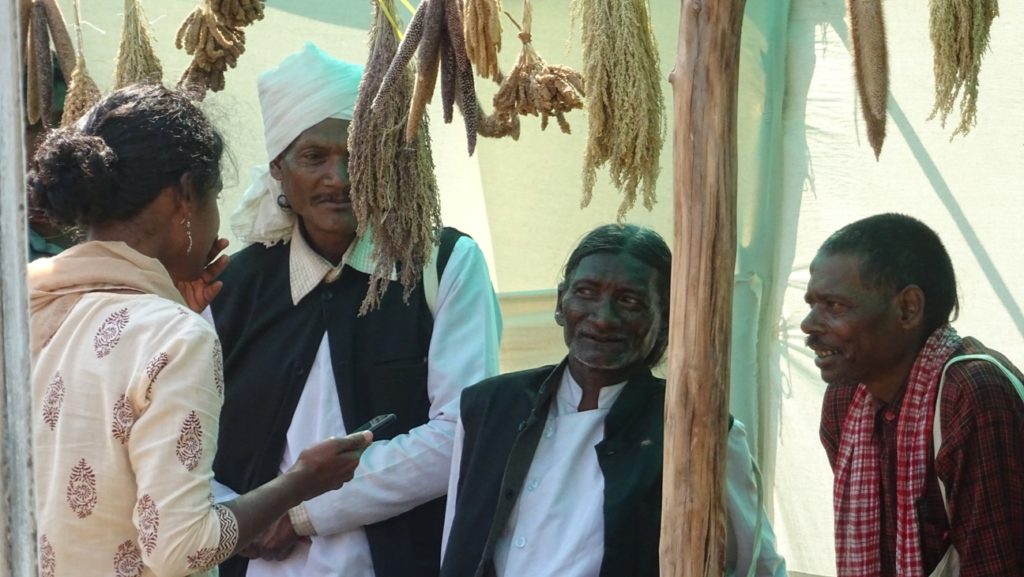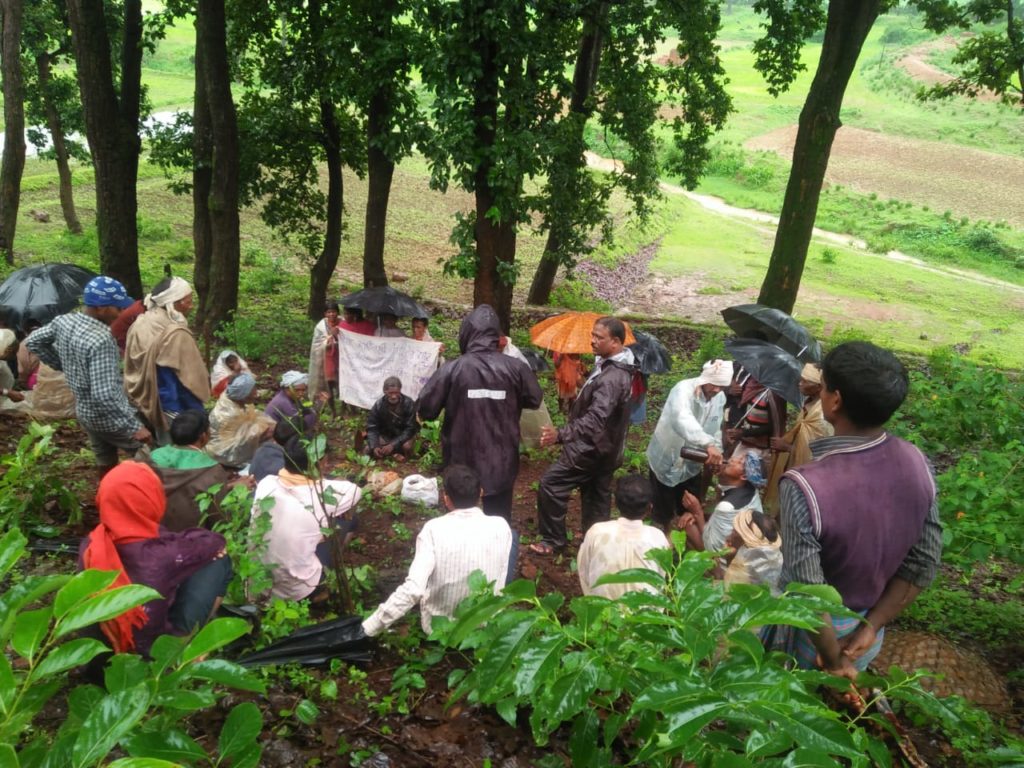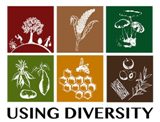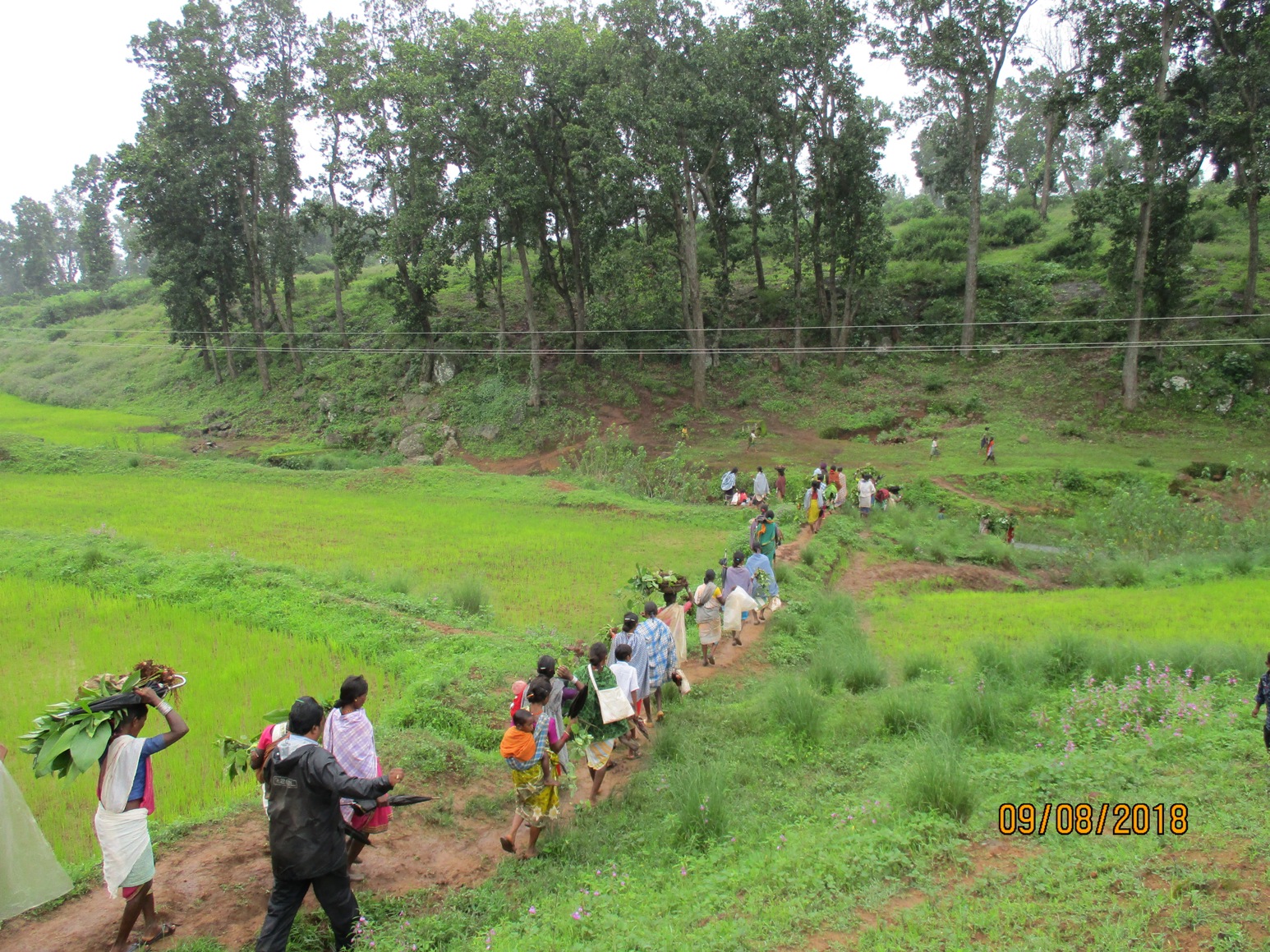
Naresh Biswas, Nirman
The very existence and identity of the Baiga adivasis is integrally linked with their forests. Forests play a crucial role in ensuring food and nutritional security of the Baigas. They consume a variety of fruits, flowers, leaves, tubers, wild mushrooms and other uncultivated food from their forests and also use a variety of plants for medicinal purposes. They also receive tremendous nutrition from forest foods. Due to increasing deforestation the availability of such forest based natural foods is also declining. In order to promote reversal of declining forest cover and biodiversity Nirman (a UD Partner organisation) organised a Sahavbhat program at Silpidi village in Baigachak on the occasion of International Day of World’s Indigenous Peoples. As part of the Sahavbhat program forest based food plants were planted.
What is Sahavbhat
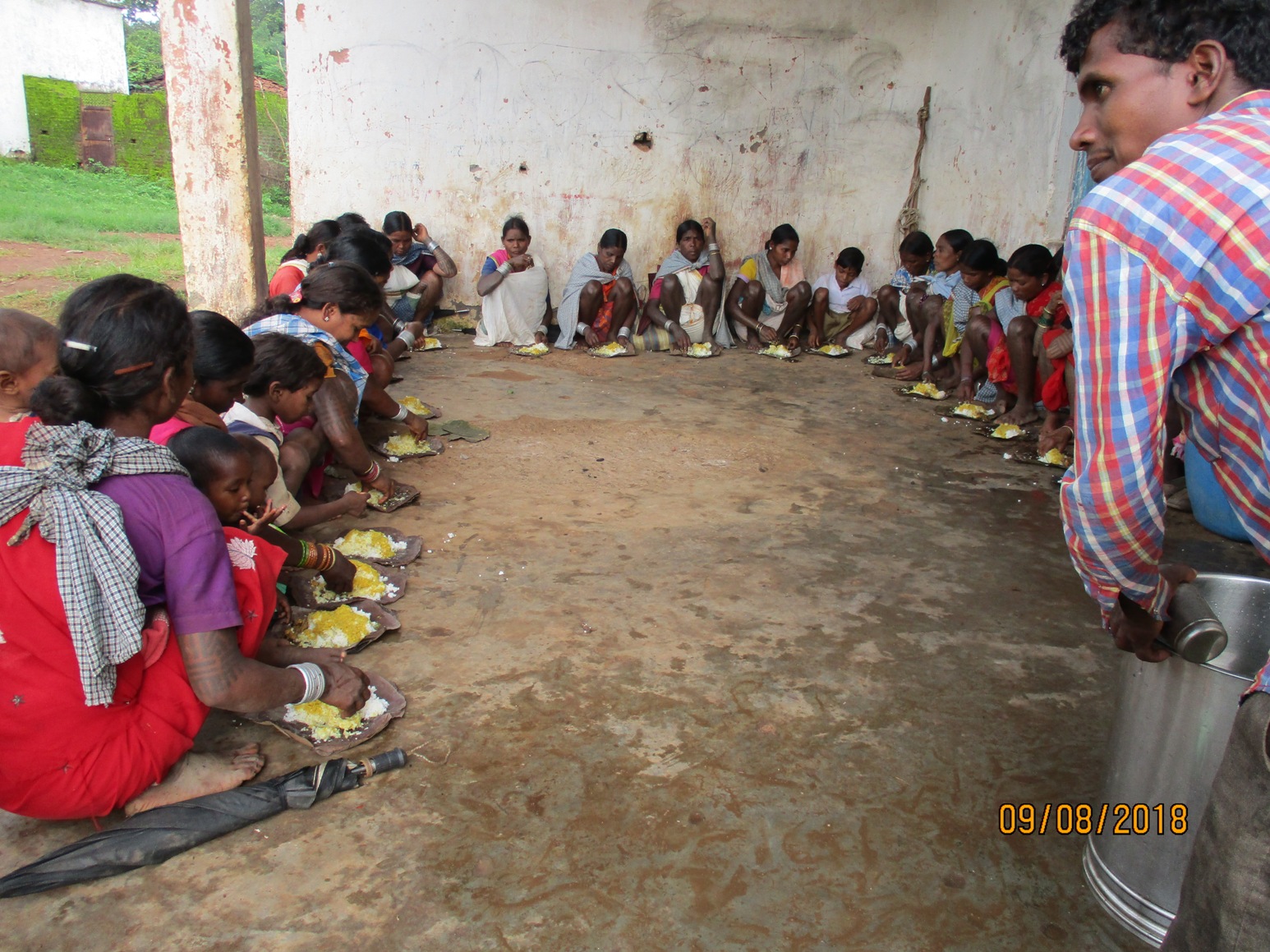
The dictionary meaning of Sahav is cooperation. Sahavbhat is a traditional system of the Baigas. If any poor or weak person is not able to carry out his work himself then through this traditional system all the baigas of the village get together to complete that work and don’t take any form of payment in exchange for their labour. They only need to be fed one meal usually comprising rice and dal. In order to promote conservation of biodiversity and community forest management the villagers of Silpidi organised a Sahavbhat program and invited villagers of neighbouring villages like Tantar, Bihidadar, Bijleedadar and Tikleekhero. Around 500 women, men, youth and children from all these villages came together and planted around 2000 plants. These plants mostly comprised uncultivated plants which the Baigas depend on for food and medicinal purposes.
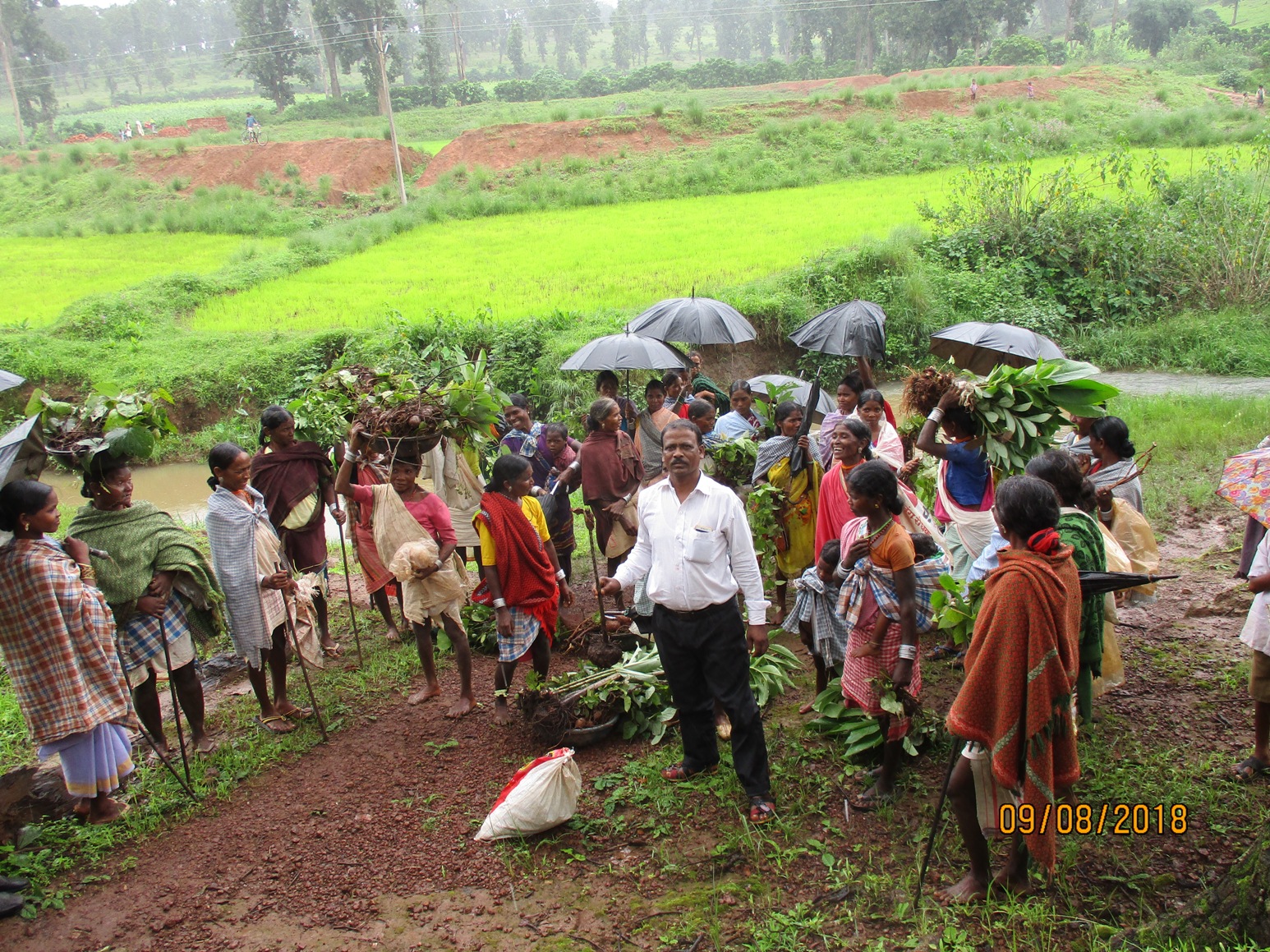
Community management of Nharin Jungle and Dhaparpakhna Jungle
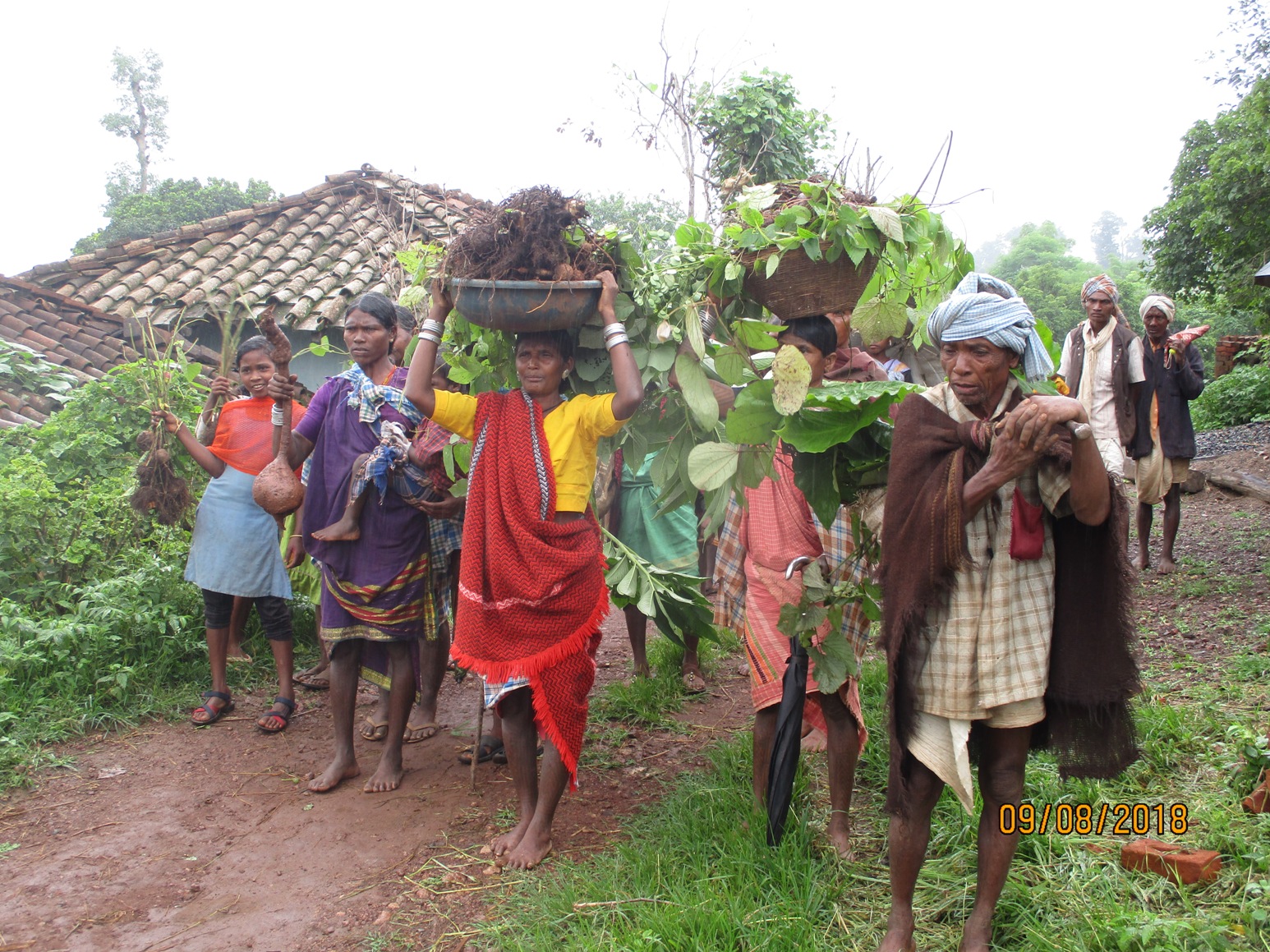
Plantation was carried out in Nahrin Dadar and Dhaparpakhna Dadar forest areas that adjoin Silpidi village. These are the forest areas for which the Baigas of Silpidi have received Habitat Rights certificate as per the Forest Rights Act (FRA). In spite of this, the Forest Department was carrying out coup cutting in these forests and the villagers of Silpidi carried out mass protests and brought a stop to the cutting of these forests. In this regard the Silpidi’s villagers decided that alongside preventing cutting of their forests they will also carry out community management and restoration of their forest areas. The villagers report that due to coup cutting carried out by the Forest Department 40-50 years ago in Nharin Jungle and Dhaparpakhna Jungle these forests have become highly degraded. In this regard they have commenced community management and regeneration activities in these forests with the objectives of promoting their regeneration and to make them ‘Food Forests’ which are a source of a variety of forest based foods. In years to come community forest management and plantation of trees and plants will continue.
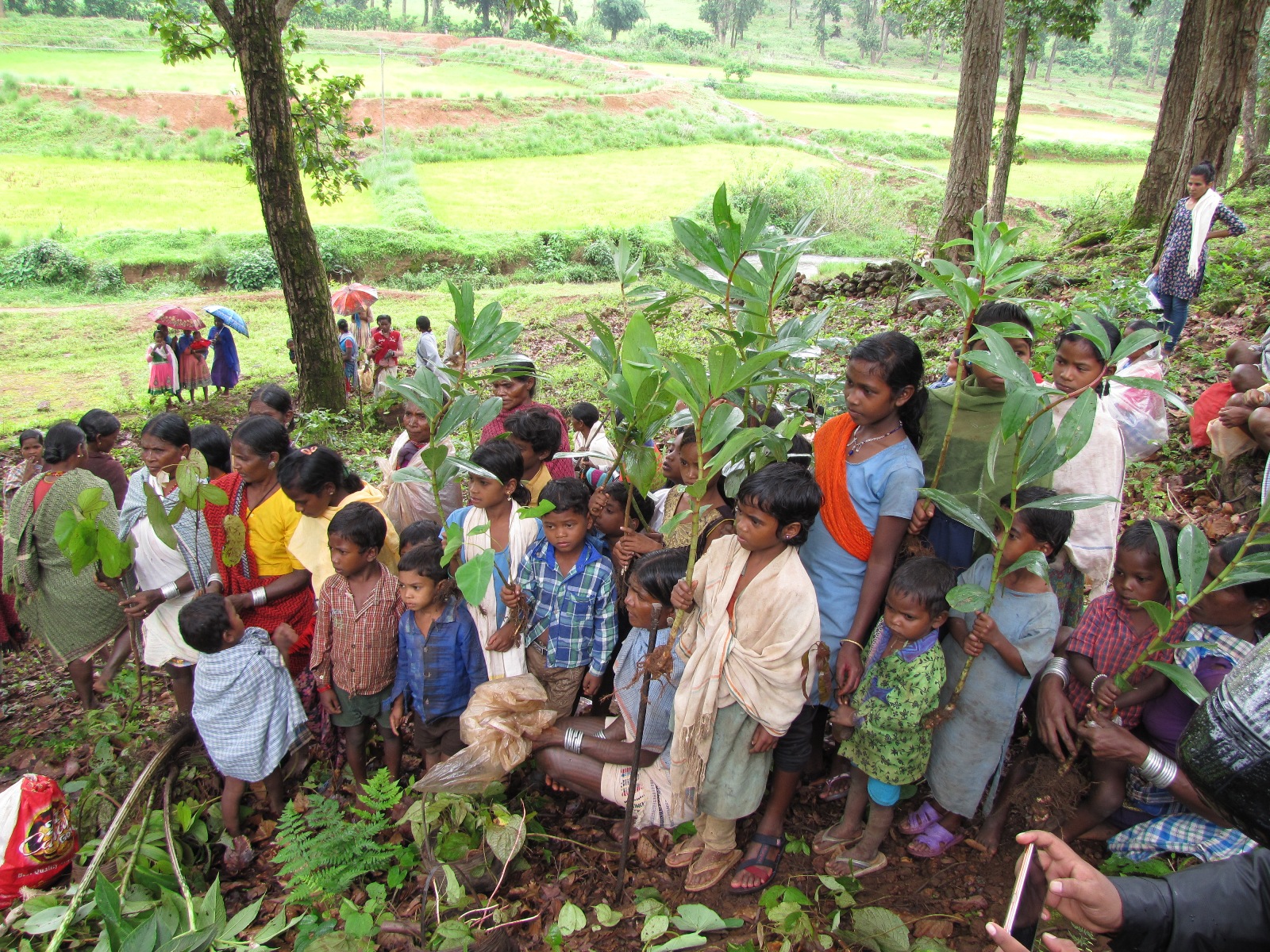
Planting of food based and medicinal plants
This year the villagers planted such plants in these forest areas whose tubers, roots, fruits, flowers or leaves are used either as food or for medicinal purposes by them.
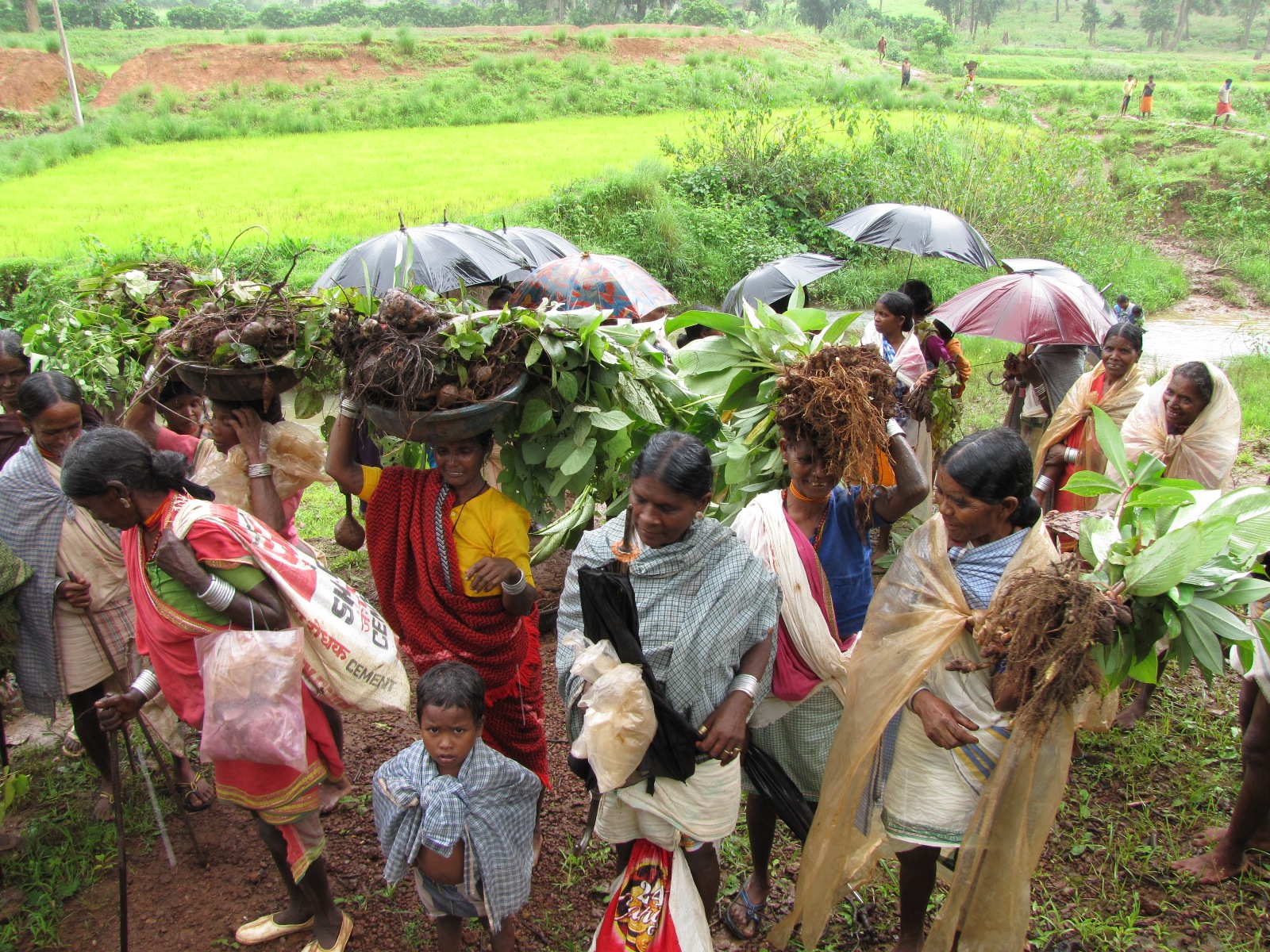
The main species planted included Rabi kanda, Loring kanda, Birar kanda, Donchi kanda, Chanohur kanda, Saidu kanda, Kochii kanda, Baichandi kanda, Ratal kanda, Dadaiin kanda, Sidva kanda, Kaniha kanda, Birchi kanda, Bhut kanda, Tikhur kanda, Bhardaudi kanda. Most of these plants are varieties of climbers whose tubers are found underground. These plants help keep the ground covered and shaded and remain green for a long time. This helps the soil retain moisture content for a long time. All these tubers are also an important part of the Baigas’ diet.
The villagers also planted Mohlaiin (Siharbela) whose leaves are quite large. These leaves are used by the Baigas to make plates and bowls. Mohlaiin seeds are known as Sihar beej and they are roasted on a fire and eaten by the Baigas. A number of small plants like Koenjhari bhaji, Saroti bhaji, Barmarkas bhaji, Dobe bhaji, Kacchar bhaji, Tadar bhaji, Patharcatti bhaji, Chakoda bhaji, Naniha bhaji, Kev kanda were also planted. The leaves and tender branches and stems of some of these plants are used as green vegetables and are some of the Baigas favourite green leafy vegetables.
The villagers also planted a number of plants which have medicinal properties and are used to treat a variety of diseases. These plants included Hasiyadepur, Dokribela, Chippi paudha, Kali haldi, Kawa kanda and Jungli haldi.
The villagers also planted the saplings of a few large trees like Sarii paudha, Amla, Saja, Semar paudha, Manohar and Aam. The fruit of the Manohar trees is used as a vegetable. In addition a few plants brought from Adkar forest of Patalkot, Chhindwara District which are not found in Baigachak were also planted.
Organising a Baiga meeting
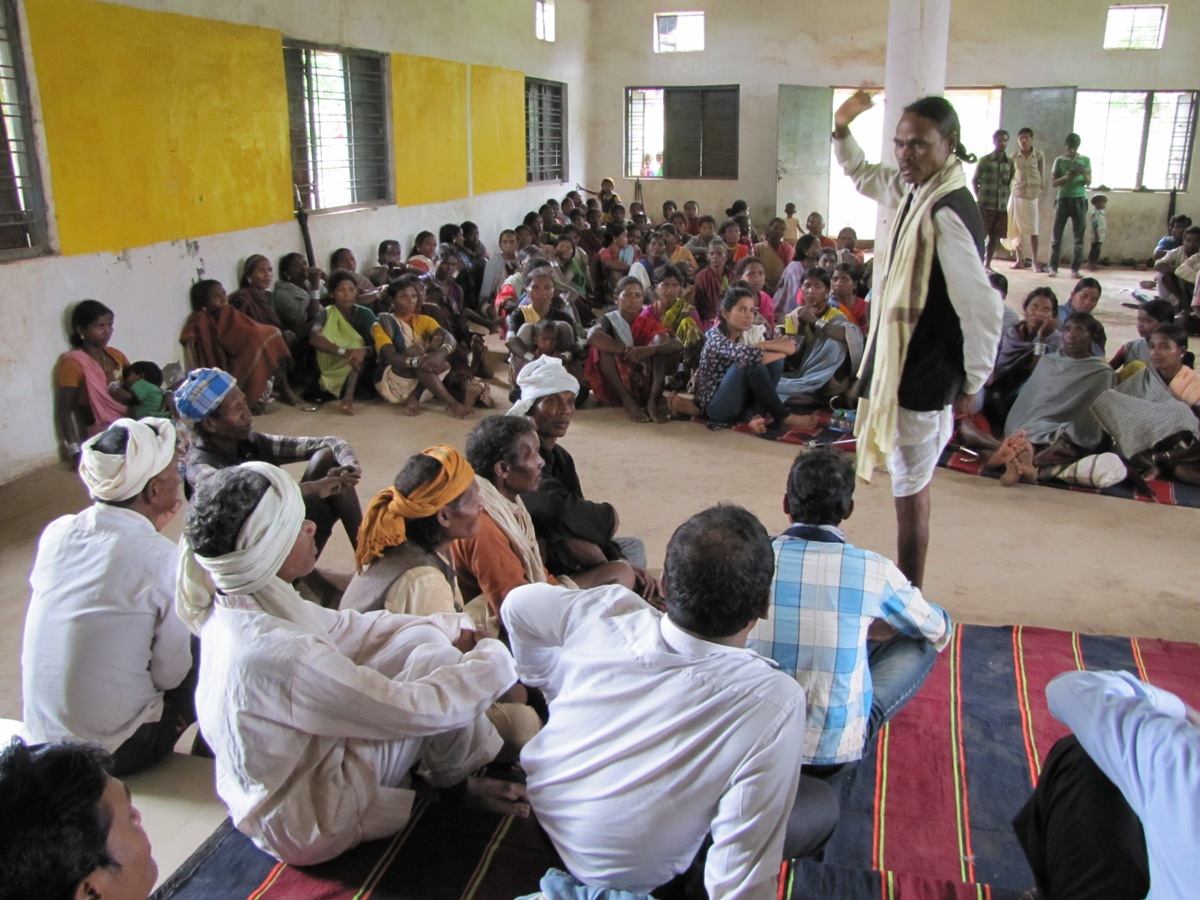
After plantation activities were completed a Baiga meeting was organised at the Community Hall in Silpidi village. On the occasion of International Day of World’s Indigenous Peoples the meeting involved discussions on issues pertaining to rights of adivasis. The main issue discussed was the fact that despite FRA being in effect for 12 years the majority of Baigas are yet to receive Individual Forest Rights (IFR) and Community Forest Rights (CFR) titles as envisioned in the act. Nirmaan also announced that they are planning to organise a training program for Baiga leaders on filling for IFR titles to Bewar cultivation plots and discussions on planning for the training program were carried out.

